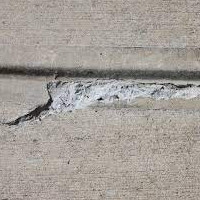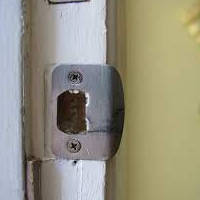Spring has sprung and here we are again looking into the barrel
of my favorite season, summer. It Beats snow, right? I for one think so!
There may be a few things we can do before the hot sultry stuff gets here, so let’s see what is first on our spring checklist home maintenance to-do list. Let us go for a walk around the home and see what is obvious that we could knock off of our list.
Winter brings with it many elements that can adversely affect your home and its value, but with close observation and diligence, you can nip it in the bud and keep the small things from becoming larger and more expensive problems to fix.
Rain Gutter Inspection
Moving on, look at the lower roofline to see if any of the gutters are hanging a bit lower than the one following or preceding

it. If you see signs that would indicate that you have a gutter that has weathered itself loose, then we need to get it sinched back up as soon as possible.
Rain and moisture can get behind that gutter and seep past your facia board, setting up mold and mildew which is the first start of wood rot. Water damage is already getting a toe-hold and will only get worse and more costly to repair the longer you allow it to run its course.
More times than not, all you will have to do is apply a little up pressure on the bottom of your gutter and at the same time drive the gutter spike back into the wood. I would put it in the same hole then angle it a bit to get into better wood.
If the gutter spike sinks in but does not hold then you must reposition it a few inches either way to find wood that will support the spike and gutter. That or try using a gutter screw which I would personally suggest using anyway. You can usually use the same hole that the spike came out of and get a screw to take hold.
Look Along Your Roof Line
Scan the gable ends for any weather damage to the facia board or drip edge along the rake of the gable. Take it all in and be thinking

of a plan to tighten your home up for the next winter. Siding has a way of getting loose and nothing looks worse than pieces of vinyl soffit flapping in the wind. The soffit is that space under the overhang of the roof that meets the top of the wall.
If you also have loose siding it may be best to call around and find a contractor or a good reliable handyman to give you an estimate on tightening things up. You would have to have ladders and a cutting board or a way of making straight cuts in the event you need to replace siding around any doorways or windows. Sometimes it’s best to pull a few runs off and replace them than constantly trying to make a damaged piece of siding stay on the side of your house.
Start at the roof and slowly work your gaze down along the entire side of the house noting anything that needs a second look. Do this on all exterior walls, again making note of any areas deserving of a little home maintenance. If you prepared the place using some post-cold-weather maintenance you will have a better outcome as the seasons roll around.
Safe Footing on Porches and Sidewalks
Winter takes its toll on our concrete walk and driveways. This is amplified when one uses salt to keep snow and ice melted for safe passage. It just takes one good spill to change your plans with a 3-month or so healing time because of a broken or sprained limb. Not to mention the pain and possible downtime from normal activities.

This can also happen long after the snow and ice are gone because of the effect not only from ice melt products but also freezing and thawing of water that finds its way into the cracks of our steps and patios.
Freezing water will spread the cracks even wider allowing more water in and eventually will raise broken chunks up higher than the surrounding area just enough to catch a toe or heel sending someone to the doctor.
Spalled concrete or ice melt damaged concrete will have an uneven surface along with a pebbly or sandy surface that could make for bad traction, especially if caught off-balance for some other reason.
Vinyl concrete patch is an excellent product to use to fill cracks and chips in concrete surfaces. It adheres well to concrete and can be shaped and formed even to a thin edge. It is usually made of a blend of vinyl resin, fine sand, and cement.
Protect Wooden Surfaces
Wooden exterior parts of your home can be adversely affected by nature’s elements and may have a different set of fixes that fall mainly into the preventative maintenance category. Things like paint and other chemical coatings protect the wood from moisture that can draw in the initial start of degradation.
Boards and planks that make up floors and banisters need close inspection to determine if replacement may be needed to ensure safe footing along with handrails that need to be sturdy and secure to be relied on when needed.
Cranky Doorways

Why do doors close and lock perfectly one time and at another point in time seem to not even fit the door frame that they are in? Or they close ok but the lock decides it doesn’t work for you anymore.
Well, the reason behind this is two maybe three-fold and is mainly due to the fact that wood will shrink and contract during different weather patterns. During cold weather, everything shrinks, and with the rise in temperature will expand. Add in the change of moisture in the air or humidity and you have a wonky door that changes like a women’s mind.
The best you can do is tighten all the hinges and you may have to remove the metal throw plate and cut a few slithers of wood out to make the bolt catch when you close it. Doors that have evaded any maintenance can become so bad that you may have to remove the door to either shim where the hinge lays or shave down that same area down with a sharp wood chisel.
Shaving one hinge and shimming another may be a fix for your particular problematic door. Extensive damage may call for the door frame being replaced or just the one side where the lock throws engage the wooden keepers.
Putting Your Eyes on Window Frames and Sills
Windows seem to need more maintenance the longer you look at them. I have found that you only see what you want, or should I say don’t want to see, when you are inspecting your windows from the ground.
It really takes a good sturdy ladder to put your eye on a window from the sills, trim, and window components that may need to be observed closely to make weather-tight decisions like cracked siding or caulking along the top and sides.
Signs You May Have Termites
While you looking around your wooden door frames and window sills, be on the lookout for any signs of termites. Some of the things to look for would be small piles of sand-like granules in and around the wooden structures of your home.
This is call frass and is termite droppings that have been excavated from a termite tunnel. If you were to notice a bunch of small slither-shaped insect wings all in one area that could be the tale-tell signs that a swarm of termites have landed at your place and are setting up residence.
There are more signs to look for and this is the right time for you to perform your DIY termite inspection. For more information on the different signs to look for and how to perform your own cost-effective termite inspection, click this link.
